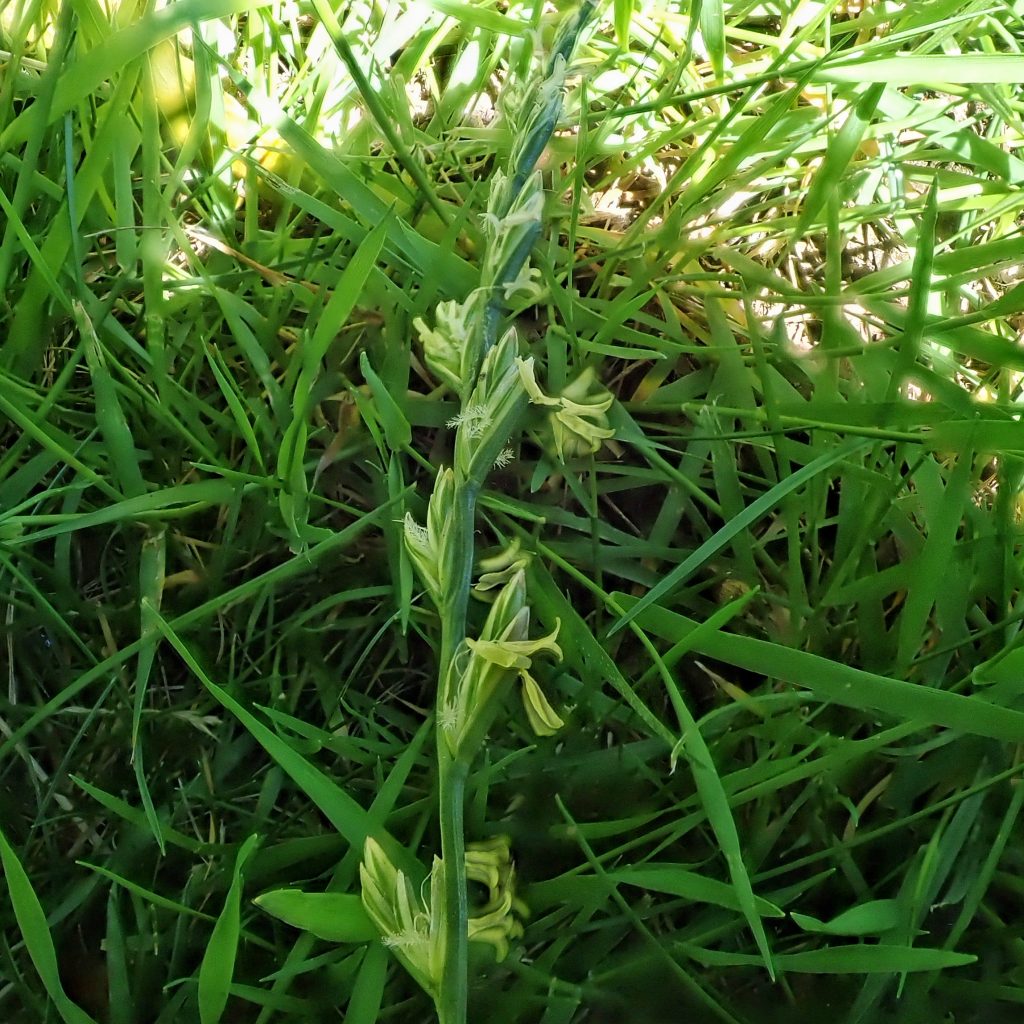
Woohoo! I identified my first grass! It is a European introduction, and was probably planted nearby, but this specimen was a volunteer with an inflorescence, and I figured it out on my own. As Charles Darwin said in a letter to Joseph Hooker, “ I have just made out my first grass, Hurrah, Hurrah! I must confess that Fortune favors the bold, for as good luck would have it, it was the easy Anthoxanthum odorata; nevertheless it is a great discovery. I never expected to make out a grass in all my life. So Hurrah! It has done my stomach surprising good. “ Though in my case it was the easy Lolium perenne, this quote, which I found in my grass bible “Field Guide to the Grasses of Oregon and Washington” (Roché, Brainerd, Wilson, Otting, Korfhage; 2019), adequately summed up my feelings when Cindy Roché confirmed my first grass identification.
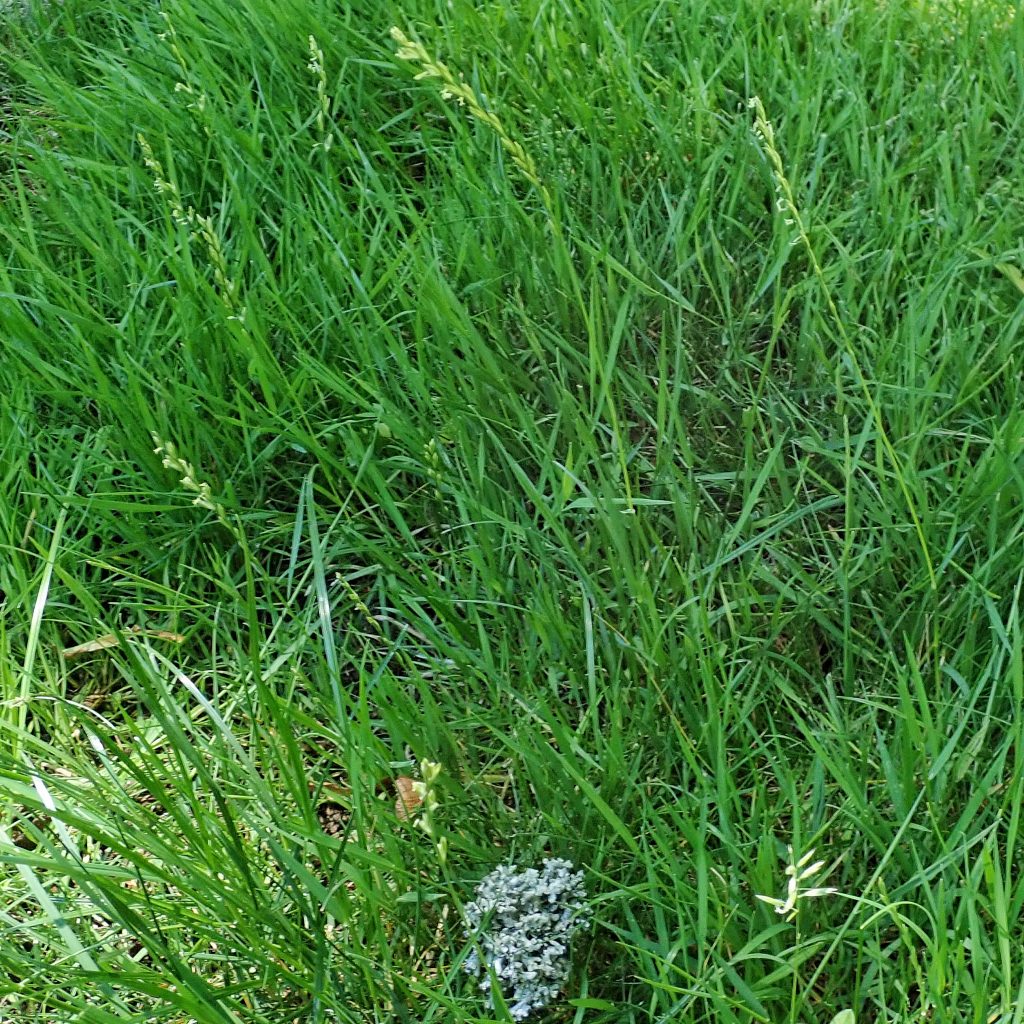
Perennial ryegrass (also known as English ryegrass and winter ryegrass) is a common and popular agricultural, lawn, and erosion control grass which frequently escapes cultivation areas, and has become naturalized world wide. It is also widely used on golf courses, athletic fields, and is the grass used for the playing surfaces at Wimbledon. Because of its propensity to outcompete native grasses and forbs it is considered to be an invasive species.
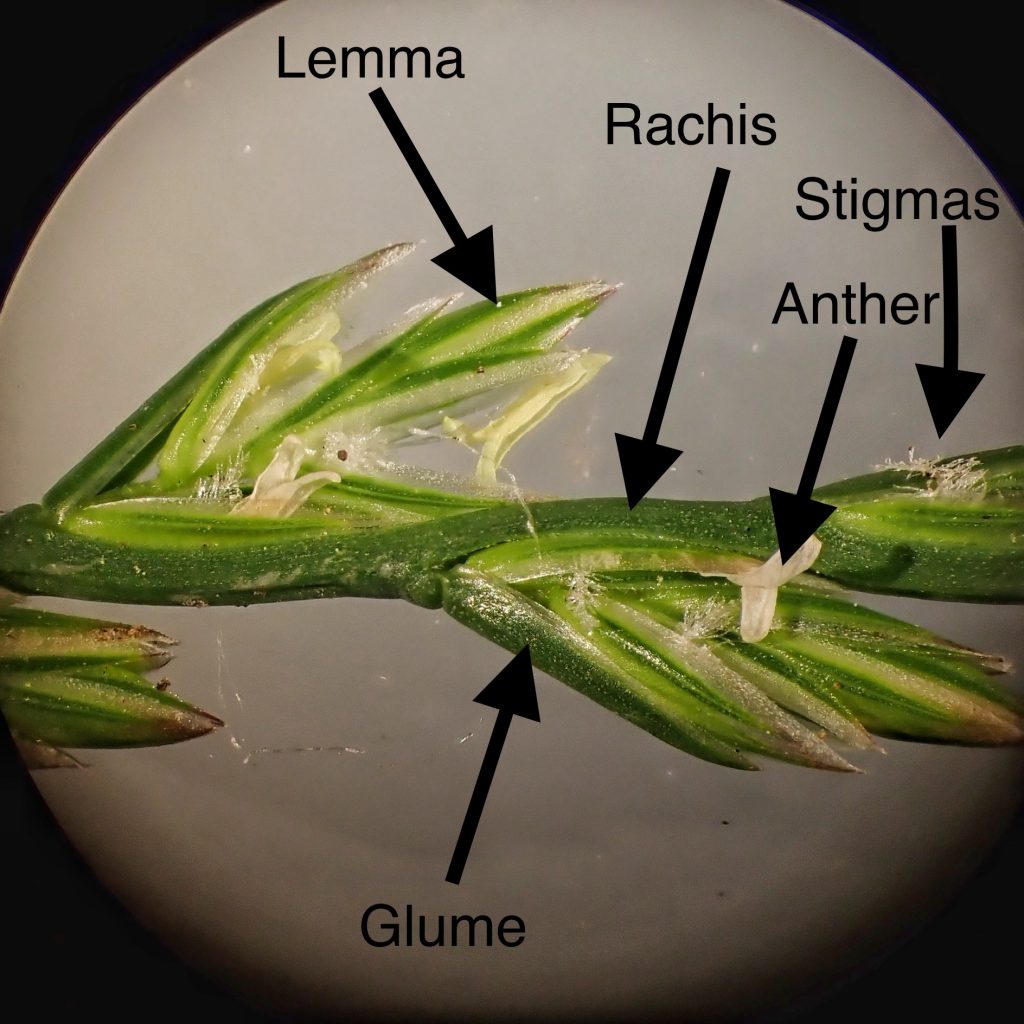
Description-(Simple grass glossary here)Perennial; low growing, bunch forming, dark green hairless grass; sheath is open for most of its length; inflorescence is 2 sided, with 1 spikelet per node, spikelets flattened; only one glume per spikelet except for the terminal spikelet having 2, and oriented with the glumeless side against the rachis; glumes are usually shorter than the spikelet; glumes and lemma pointed, but usually awnless in this subspecies.
Similar species– Ssp. multiflorum has long awns on lemmas; L. temulentum has glumes 1.5x the length of the spikelet.
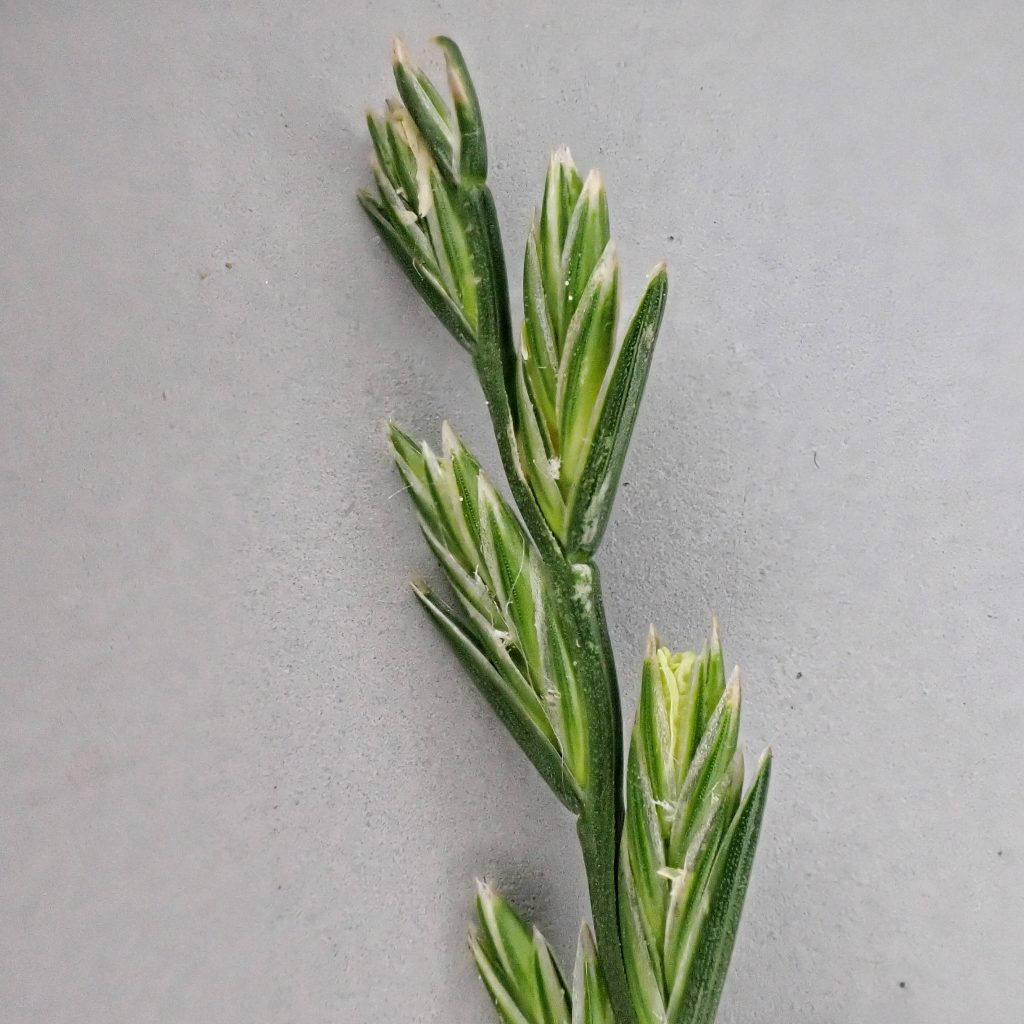
Habitat-Disturbed ground, open areas, meadows, lawns.
Range-Eurasian native; naturalized world wide; region wide, but more common west of Cascades.
Reproductive timing-May through July
Eaten by– Probably anything that eats grass, including the moths Pediasia trisecta (Larger Sod Webworm) and Nephelodes minians (Bronzed Cutworm), several species of aphids, and of course herbivorous mammals.
Etymology of names–Lolium is the Latin word for darnel (Lolium temulentum), another European ryegrass. The specific epithet perenne is from the Latin for perennial.
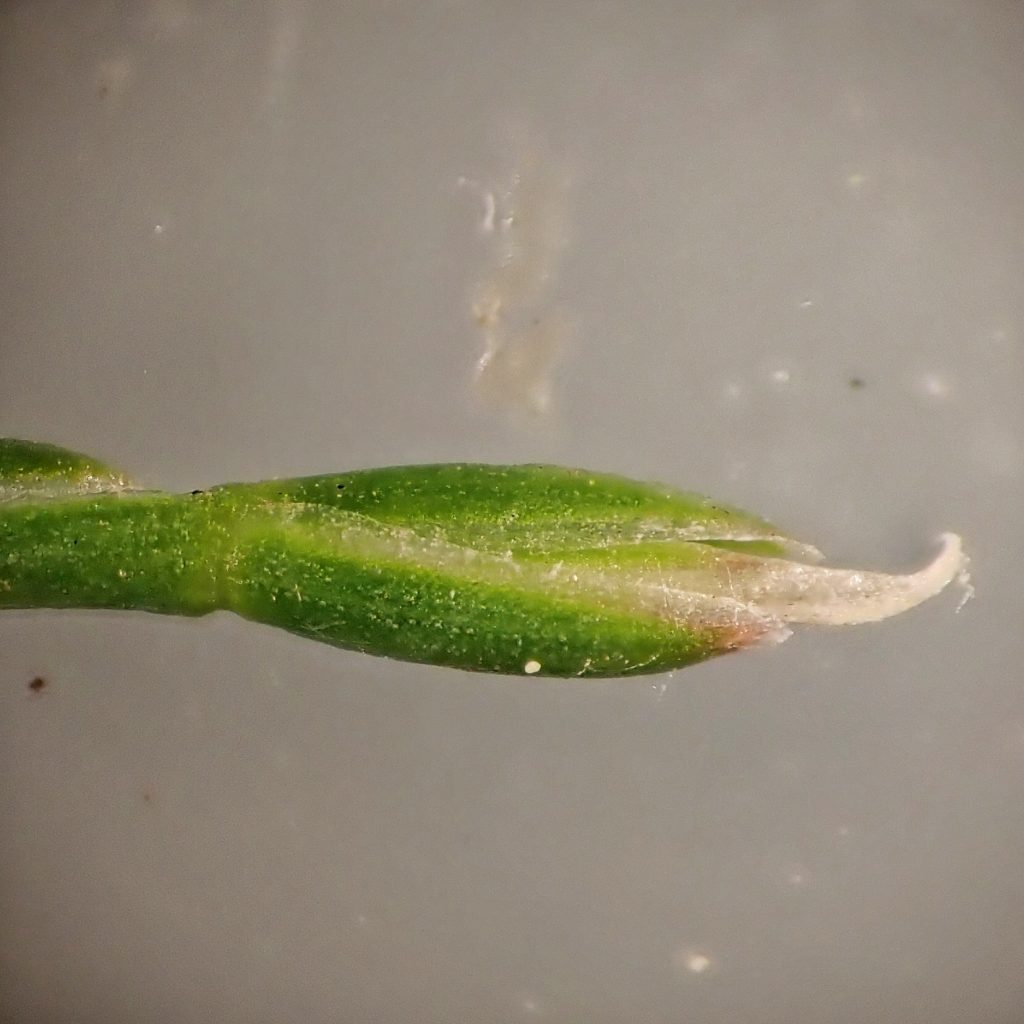
https://www.illinoiswildflowers.info/grasses/plants/english_ryegrass.htm
https://agsci.oregonstate.edu/beaverturf/perennial-ryegrass-lolium-perenne-l
http://biology.burke.washington.edu/herbarium/imagecollection/taxon.php?Taxon=Lolium%20perenne
https://en.m.wikipedia.org/wiki/Lolium_perenne
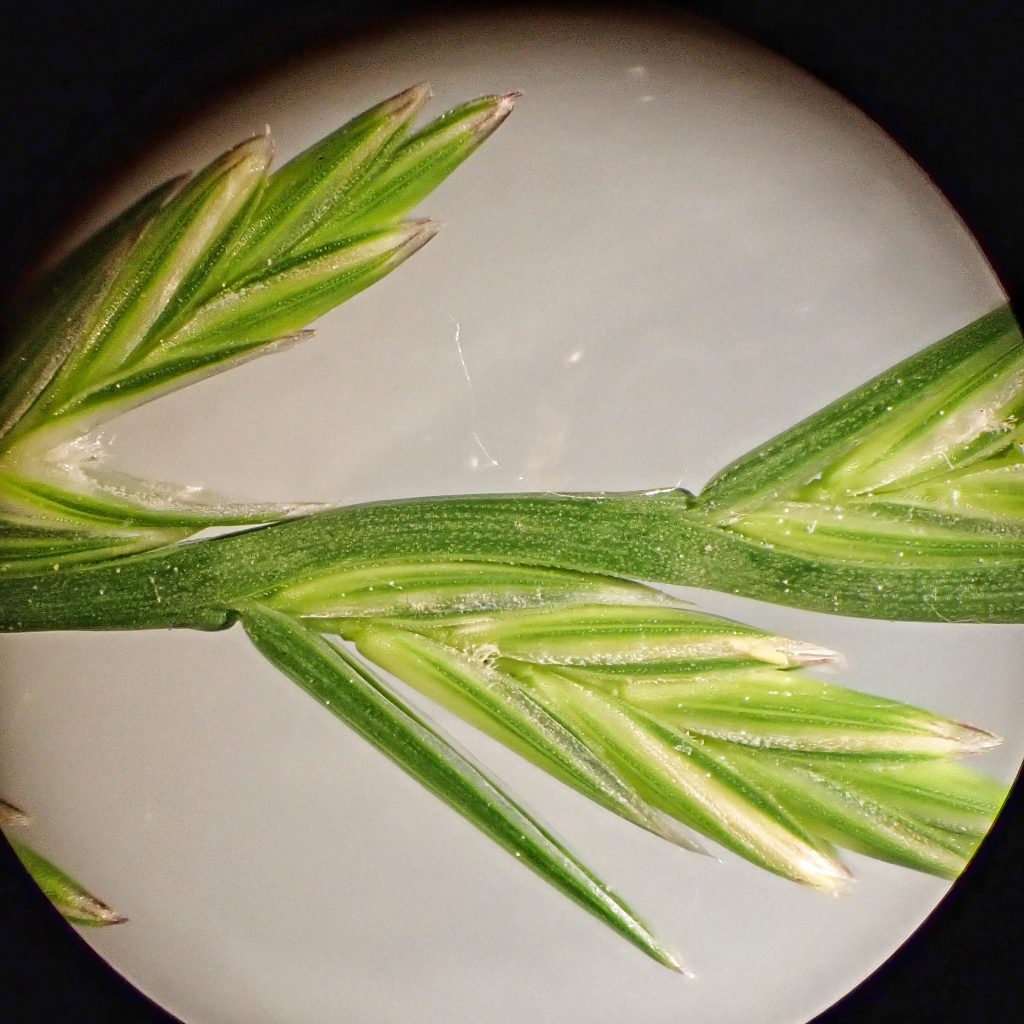
1 thought on “Lolium perenne ssp. perenne (Perennial Ryegrass)”